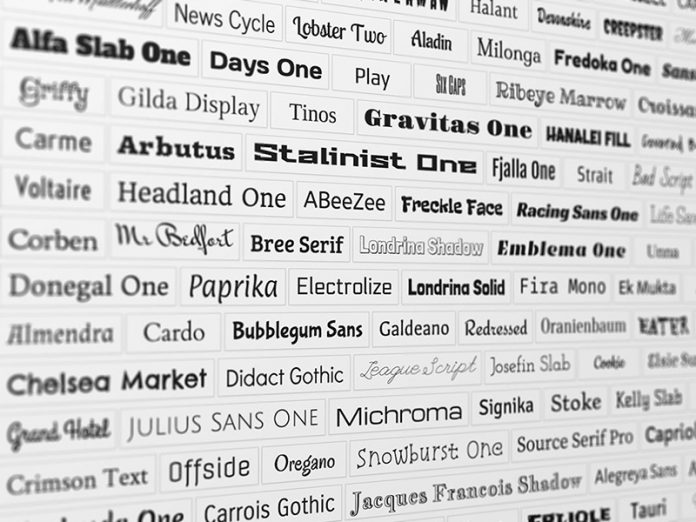By Alex Dubinsky
When creating a website, it is easy to think that fonts don’t matter, or that they are a simple typeface which can be picked randomly at the drop of a hat. The most important thing to remember is to pick a font which is web-safe. But where are you going to find web-safe fonts that are free to use for yourself and can be hosted straight from your website to be seen on all platforms? That’s where we come in. Here we are going to go through 16 web safe fonts for you to use in your upcoming web design projects.
1. Arial
Arial is a well-known ‘sans-serif’ font typeface, and is used for headlines and paragraphs alike. It is often used in web design as a main and fallback font.
2. Baskerville
Baskerville is a ‘serif’ font, relatively thick in texture. This font was developed in the mid-1700s. Richard Breezy, a marketing writer at Draft Beyond, commented that, “The design of the Baskerville typeface is balanced, and softens the often hard edges of normal serif fonts”. It is supported by the newer Microsoft and Apple operating systems.
3. Bodoni MT/Bodoni 72
The Bodoni MT is a ‘serif’ typeface, similar to Times New Roman. It is more commonly used inside paragraphs than on headlines in web design commonly. It is used as default in older operating systems, and has been replaced by Bodoni 72 in new operating system versions.
4. Calibri
Calibri is probably one you’ve heard before, as it is Microsoft’s default favourite and is a standard ‘sans serif’ font. It is modern but still soft, and looks warmer than many of the other fonts.
5. Calisto MT
This typeface is a ‘serif font’, but has slightly less brutal edges and is softer than other similar fonts. It is a common standard Microsoft font.
6. Cambria
Cambria is probably one you recognise too! It is an even soften ‘serif’ font than the one before, and feels modern for designers. It has a high level of readability too, which makes it even more popular.
7. Candara
The Candara typeface is a ‘sans serif’ font, part of Microsoft’s font collection of late. Harriet Theo, a business expert at Research papers UK and Writinity, noted, “This typeface feels less business-like than some others that are commonly used in web design due to the uneven stroking weights of it.”
8. Century Gothic
The Century Gothic ‘sans serif’ font is naturally geometric; making it swift and balanced in look and feel. It is commonly used for headings. It is included with Microsoft and Apple operating systems.
9. Consolas
The Consolas font is another one of the ‘sans serif’ typefaces, but presents a more unique outlook to the natural design of the typeface. All characters in the typeface actually use the same width, which makes is stand out.
10. Copperplate Gothic
Copperplate Gothic is, as you probably guessed; a gothic-inspired font. It has some serifs, and it is unique in not having lowercase fonts available whatsoever.
11. Courier New
This typeface is a thinner ‘slab serif’ font. It is supported by both Microsoft and Apple in all operating systems, and on mobile and computer devices. It is monospaced.
12. DejaVu Sans
DejaVu Sans is a ‘sans serif’ typeface which holds clean and readable font lines. It holds similarity to Arial and Verdana fonts.
13. Didot
This typeface was inspired by the original baring the same name from the 19th century. It is an Apple favourite, and is utilised by many of their operating systems. It has sharper edges than some of the other typefaces referenced here.
14. Franklin Gothic
This font type is another one of our ‘sans serif’ typefaces, which holds very thick letters (which almost seem bolded). This is a great headline choice, but not one we would recommend for body texts.
15. Garamond
This font type is a ‘serif’ font, originally inspired by a mid-1500s engraver from Paris. Its edges are soft and round, similar to those of Times New Roman. This typeface has been modernised by operating systems over the years.
16. Georgia
Georgia holds many similarities to Garamond. It is a ‘serif’ font with somewhat rounded edges and a warmer feel than many of its close cousins. It is supported by most commonly used operating systems.
About the Author
Alex Dubinsky is a digital marketing strategist and planner at Dissertation writing services and Gum Essays. He has over a decade of experience in the marketing industry. He also writes for Essay writing service.




































